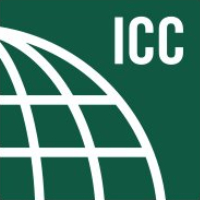
New energy code expected to be 15% more efficient
![]() The 2009 edition of the International Energy Conservation Code (IECC) — the national model energy code of choice for states, cities and counties that adopt codes — is published and now available for adoption by jurisdictions.
The 2009 edition of the International Energy Conservation Code (IECC) — the national model energy code of choice for states, cities and counties that adopt codes — is published and now available for adoption by jurisdictions.
The IECC published by the International Code Council is tied to federal law determined by Congress and the U.S. Department of Energy (DOE) through the Energy Policy Act of 1992. It is the only energy code that serves as the basis for federal tax credits for energy-efficient homes, energy efficiency standards for federal residential buildings and manufactured housing, and state energy code determinations.
Recent legislation passed by the U.S. House of Representatives includes $3.4 billion in energy assistance grants for states if the International Code Council’s 2009 IECC is adopted and administered. The American Recovery and Reinvestment Act (HR 1) requires governors who want a share of state energy assistance grants to certify their state will adopt an energy code for one- and two-family homes, townhouses and low-rise, multiple-family buildings that meets or exceeds provisions in the 2009 IECC for residential construction, and the ANSI/ASHRAE/IESNA Standard 90.1-2007, as referenced in the 2009 IECC for commercial buildings.
The 2009 IECC will produce approximately 15% in energy efficiency gains compared to the 2006 edition, according to DOE. As a result, homes and commercial buildings, including schools and hospitals built in jurisdictions that adopt the 2009 IECC, will consume less energy and help the environment by reducing emissions associated with building operation.
A U.S. Department of Energy (DOE) ruling published in the Federal register clears the way for establishing the 2009 International Energy Conservation Code (IECC) as a safe harbor equivalent to the ANSI/ASHRAE/IESNA 90.1 Standard. The ruling says the Standard, or equivalents like the 2009 IECC, would achieve greater energy efficiency in commercial buildings compared to previous editions.
Adopted at the state and local level in 39 states and Washington, D.C., the IECC residential and commercial procedures have a strong following and a well-developed format that is simple to use and familiar to code officials. To purchase the 2009 IECC and other International Codes, visit www.iccsafe.org/2009icodes.
New energy efficient provisions in the 2009 IECC include:
- Improved window and skylight efficiencies for homes constructed in “warm humid” and “hot humid” climates which lower energy costs during cooling periods.
- An increase in insulation R-values for walls, floors and basements in cold climates to achieve greater heating and cooling savings.
- High-efficiency light bulbs as a requirement in at least 50% of permanent lighting fixtures in new homes.
- New separate requirements for high-rise condominiums and apartments regarding commercial insulation and window tables.
- Radiant heating requirements for unenclosed public spaces;
- Clear depiction of mechanical provisions regarding when and where a Demand Control Ventilation strategy is required.
The International Code Council, a membership association dedicated to building safety and fire prevention, develops the codes used to construct residential and commercial buildings, including homes and schools. Most U.S. cities, counties and states choose the International Codes, building safety codes developed by the International Code Council.







